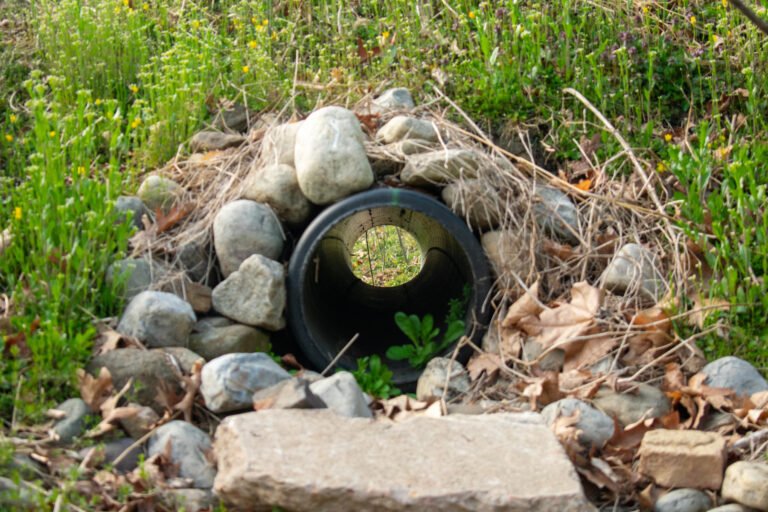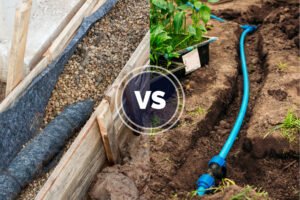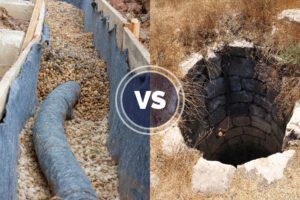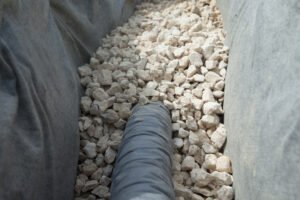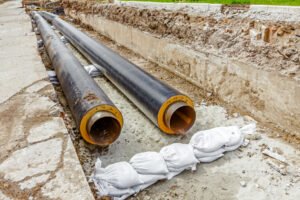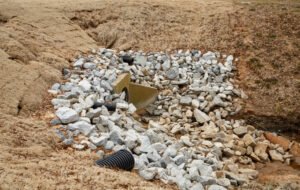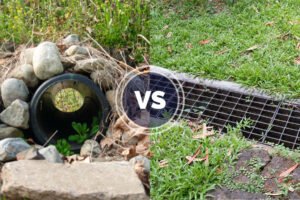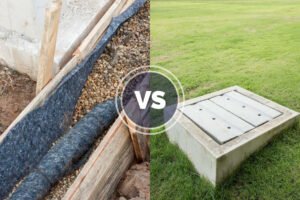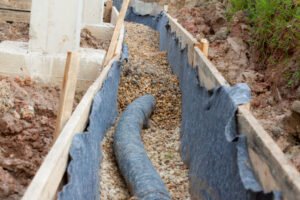French drains are undoubtedly the most viable tools to channel water from backyards. But, do you know that a wrongly installed drain can clog and divert water back to the house? And, as nasty as it sounds, a malfunctioning french drain can instantly destroy your decks and landscape.
But, how do you examine all those flaws and rectify them beforehand? Of course, with our checklist! So, today, we’ll answer the most common questions on french drain installation and compile all the clues for checking the location, approvals, and budget for efficient functioning. So, let’s resolve it all!
1. How Deep Should You Install French Drain Pipes?
French drain pipes should be installed at a minimum depth of 18 – 24 inches to prevent water seepage and stagnation along the building foundations. But, you must install them at a depth of 2 – 6 feet for single or multi-story basements.
Additionally, a french sewer drain should be 9 -12 inches wide and 18 inches deep and must have a 3 – 4 inch gravel or soil bed for efficient drainage. And a trenching shovel, pick axe, or mattock will help you break down the rocks and install them at the desired depth.
Always pick crushed stone or sandy gravel for optimal drainage in shallower french drains, but prefer a good quality loamy or clayey packing to impart more support to deeper french drains.
2. How Far Should a French Drain Be from the House?
French drains should be at least 3 – 5 feet apart from the house at the centers of the low-lying areas or the end of the central drain pipe. But, you must place them at least 6 – 10 feet away from multi-story basements or deeper, underground cellars.
Moreover, french drains should always be placed diagonal to the foundation and must have a minimum distance of 2.5 feet to avoid long-term structural issues. However, the drain should not be too far from the natural water pooling points and the gutter route of the terrace.
Mark the trench at a distance of at least 600-700m from all the trees, fences, and patios to avoid roots and posts from falling into the drain and clogging it with time.
3. Should French Drain Perforations Face up or Down?
French drain holes should always face downwards to help discharge surplus water to the surrounding soil and prevent stagnant water in the drain. The pipe would still work if perforations are at the top, but it’ll drain slowly and might clog due to dirt.
You can wrap the perforated pipe with porous landscape fabric, woven cloth, or a simple sock to prevent dirt and debris from entering the holes and clogging the pipes.
4. Does a French Drain Need to Be Sloped?
A french drain system needs a precise slope between 1-3% for fast drainage and water flow. But, you can reduce it to 0.5-1% with perforated PVC pipes or landscape fabric. However, a steeper 2-3% slope is a must for a french drain with crushed stone or gravel lining.
Alternatively, use a high-power motor-driven or electric sump pump to drain your pipe if you have a flat backyard with no space for a sloped drain. And, if you have a steep site, you just need to mount the drain along the gradient and add some bunds to prevent soil erosion.
Remember that the french drain pipes should always be sloped away from the house to prevent water seepage and percolation at the foundation level.
5. How Much Water Can a French Drain Handle?
French drains can handle about 20,000 – 30,000 gallons of water, but the total capacity varies with the pipe diameter. For example, standard 3-4 inch drain pipes hold about 25,000 gallons of water, but larger 6-8 inch pipes disperse up to 45,000 gallons.
Tips to Improve the Capacity of a French Drain:
- Line the sides of the drain pipe with landscape fabric to prevent surface infiltration and seepage of water.
- Direct the water towards a downspout to avoid stagnation.
- Pack permeable soil or crushed stone around the drain for better drainage.
Use a ducktape drain board, concrete or cement sealer, or some polyurethane spray along the inlet to prevent leaks outside the french drain.
6. How Much Gravel Should You Use for a French Drain?
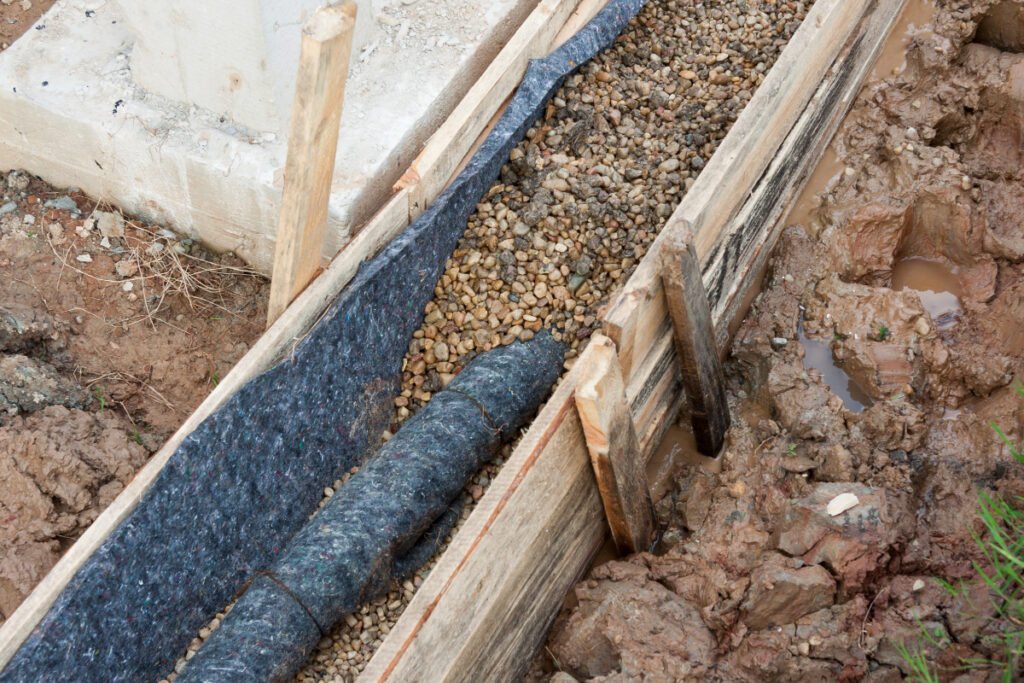
French drains need about 0.5 to 1 cubic feet of gravel per foot, depending on the drain pipe size. For instance, pack about 0.6 cubic feet of gravel for standard, 6-inch pipes, but use 0.8 – 0.9 cubic feet of gravel for extensive, 12 – 14 inch pipes.
Additionally, you can place a 2-inch layer of river rock or granite gravel on top of the french drain and complete it with a 4” layer of top peat soil for better drainage.
Cover the gravel with sod or grass to match your landscape and hide the drain efficiently.
7. How Much Does a French Drain Cost?
French drains cost about $15 – 20 per foot without a pump and $50 – 60 per foot with a sump pump. So, it’ll cost you about $500 – 1500, depending on the size of your backyard. But, basement french drains are expensive and cost $5000 – 6000 for the total installation.
Factors Affecting the Cost of a French Drain:
- Labor Cost: Labors usually charge about $50-60 per hour to dig a drain in soft soil but might charge about $100 per hour if heavy utility lines, concrete pads, or solid rocks are underneath.
- Approvals: You’ll need $50-100 to dig a french drain around a basement with proper local codes.
- Material Costs: Standard, 6-inch, perforated PVC pipes cost $0.5 – 3 per linear foot, while sturdier 12-inch pipes are expensive and cost $ 4 – 5 per linear foot.
- Drain Depth: Shallower, backyard french drains cost less, only about $10 – 20 per foot, while deeper basement drains are pricey and cost about $ 30 – 40 per foot.
- Drain Inspection: Private drain inspectors charge $ 150 – 250 to check the drain route and components, which adds to the cost.
- Retaining wall Installation: Retaining walls are a must to support french drains along sloping sites. But they are extremely costly and require about $4000 – 5000 for proper installation.
Install french drains along sloped yards or put them around the sides of the foundation to save digging and reduce the charges drastically.
8. How to Tell If a French Drain Is Working?
French drains are functional if there are no basement leakages, foundation infiltrations, or pools of stagnant water in your backyard. Similarly, an optimal french drain keeps the gravel dry, wipes out the standing water in the pipe, and maintains a proper flow.
Steps to Check If Your French Drain Is Working:
- Look for Stagnant Water Pools: Check if you have any standing water pools in the low-lying areas of your yard and determine the source of the leak. Large, marshy pools indicate poor drainage, while firm and dry gravel imply a well-operating french drain.
- Analyze Basement Flooding: Basement leaks, wet walls, mold, and mildew often indicate a clogged french drain and need immediate repairs.
- Inspect the Drain Trench: Look out for any standing water in the drainage trench and use a shovel or run a plumber’s snake to unclog it and restore the function.
Use a high-pressure hose sprayer to flush the french drain and a pressure washer to remove all the debris and unclog it.
9. Does a French Drain Need a Catch Basin?
French drains don’t require a catch basin in backyards with moderate rainfall, low surface flooding, and coarse crushed stone gravel. However, catch basins are recommended for better drainage in low-lying areas, paved yards, and deeper building foundations.
Here’s a list of some places that need a separate catch basin along with the french drain:
- Backyards with extensive surface water and storms
- Flooded, low-lying areas
- Water channels from the downspout and foundation level
- Roof and terrace gutters
- Paved or cobbled backyards
Catch basins should always be slightly lower than the ground level to ensure a free flow of water and prevent erosion.
10. Can You Finish a Basement with a French Drain?
Yes, you can finish a basement with a french drain, but first, you must seal all the cracks and add insulation to absorb moisture from the basement walls. Later, you can frame it with drywall on top of the drain or create a cavity and add framing on both sides of the french drain.
Use sturdier 12” wall screws to install drywall directly on top of the french drain and glue one of its ends to the foundation wall for better support.
11. Can You Cover a French Drain with Dirt?
No, you shouldn’t cover a french drain with dirt as it might clog the pipe, obstruct water, and curb the flow and fast drainage. Instead, cover the drain with a coarse rock and porous landscape fabric that filters the drain water and allows it to pass quickly.
Always use ½ to ¾ – inch river rock gravel to help settle the soil and dirt and move more water through the drain pipe.
12. Can You Use Landscape Fabric for French Drain?
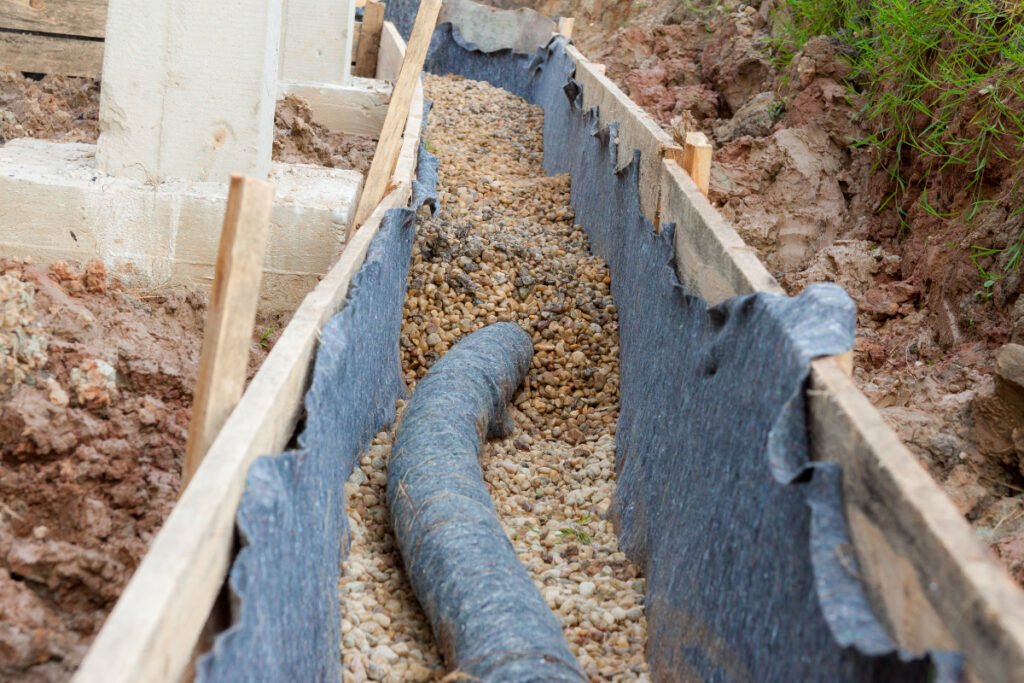
Yes, you must use landscape fabric with a french drain to separate the soil properly and create a barrier that prevents dirt and debris from entering and clogging the pipe, thus allowing water to reach the holes and drain effectively.
Here, you can either use non-woven polypropylene or polyester fabrics to enhance water flow and drainage or go with woven linen fabrics for better erosion control. Generally, non-woven landscape fabrics are porous and lightweight, whereas woven fabrics are robust, sturdy, and have a better warp resistance.
Use a lightweight, 3-oz landscape fabric behind the french drain’s retaining walls to reduce hydrostatic pressure and effectively filter the dirt and debris.
13. Can You Drive over a French Drain?
Yes, you can drive a bike or a small-sized car over a french drain, but you must be careful and drive slowly to reduce vibrations and breakage. But you shouldn’t drive near the sump pump, the drain trench, or areas with loosened gravel covers that secure the drain.
Use sturdier 8” PVC pipes to withstand heavy vehicular vibrations and movements in french drains that are too close to the main driveway.
14. Can You Cover a French Drain with Grass?
You can cover french drains with grass to divert the surface water, eliminate seepage, and relieve extra pressure off the retaining walls. But, first, you must fill your trench with gravel and then line it up with landscape fabric to hold the soil for growing grass.
Use short, moisture-loving grasses like Bermuda grass, Centipede grass, Zoysia grass, and Kentucky bluegrass for a green cover over your french drains.
15. Can a French Drain End Underground?
French drains should generally end above-ground, at the side of the slope, to allow water to escape and achieve a proper run-off. However, you can finish them underground in wet or bog garden areas, but be sure to use a pop-up drain emitter to prevent stagnation.
Never end your french drain below the groundwater level as it may seep through the landscape fabric and backflow into the house.
16. Can I Connect the Downspout to a French Drain?
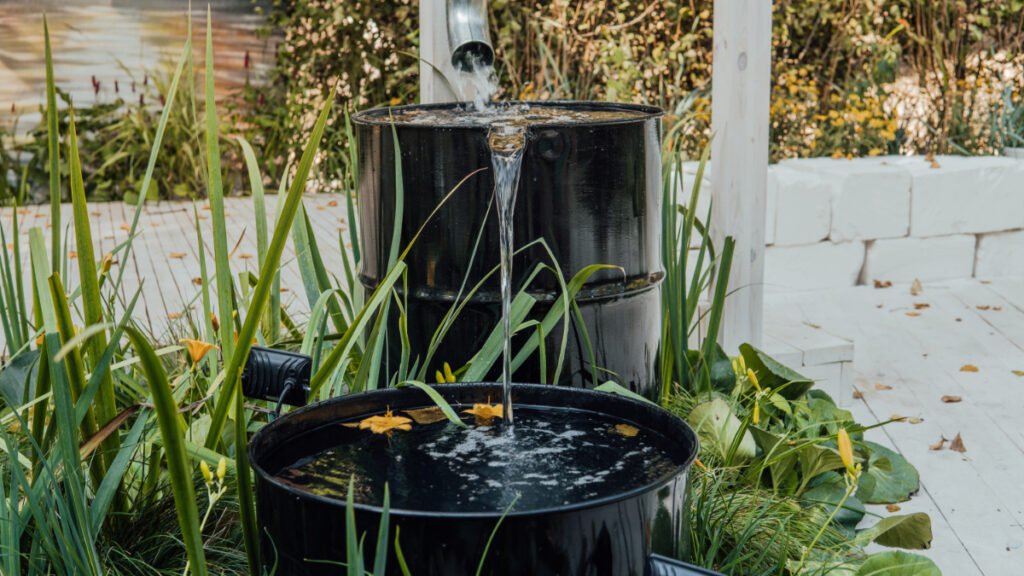
Yes, you can connect the downspout to a french drain, but you must attach an additional overflow pipe to discharge the excess water away from the foundation. Plus, you must release it to the main city sewer or use a water cistern or rain barrel to prevent flooding.
Always add a screen or sieve to the ends of the downspout to prevent leaves, stones, and twigs from clogging the french drain pipe.
17. Can You Build a French Drain Without Pipe?
No, you cannot install a french drain without a pipe as it could quickly flood and seep water right up to the foundations. Instead, you can use a trench drain with about 3-4 inches of gravel rock to disperse surface water without a drain pipe.
Always dig the trench as deep as possible to prevent collapse and flooding during heavy rain. And use larger, ¾-inch gravel for more stability and better drainage.
French drains are tedious to install and require a lot of planning and digging for optimal function. So, we solved your doubts and highlighted some tips and tricks to help you out. And we even considered grass, gravel, and landscape fabrics that boost drainage and enhance your yard designs.
Alternatively, you can skip the tedious pipe installations and use simple swales, trenches, or valleys to disperse water in low-rainfall areas. So, don’t forget to check our list of french drain alternatives for more inspiring and cost-effective drainage ideas.

